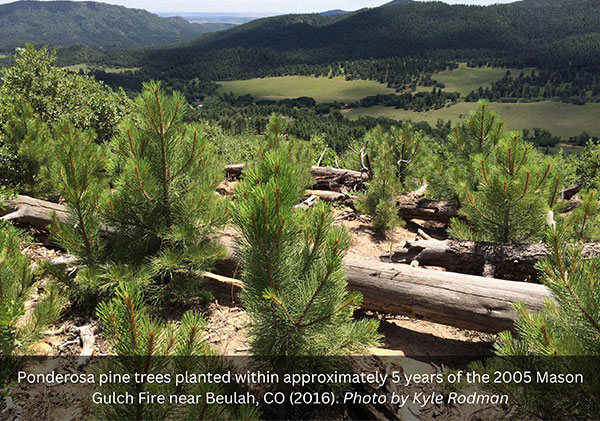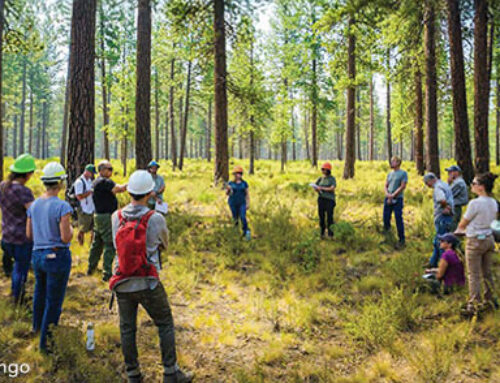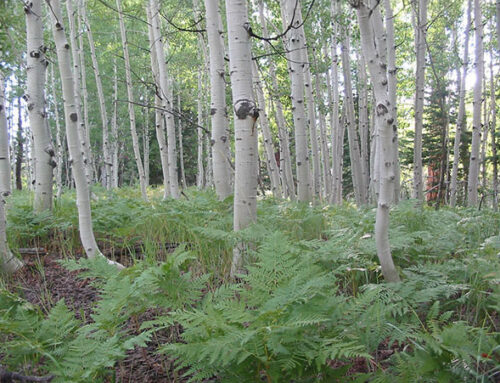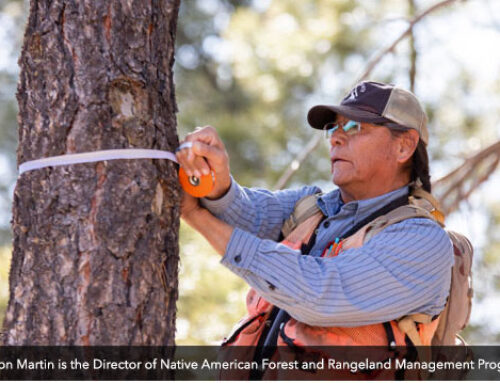Publication Corner: Green is the New Black: Outcomes of post-fire tree planting across the interior West
Wildfire-impacted landscapes now account for about 80% of reforestation needs throughout USDA Forest Service lands, yet only 6% of post-fire needs have been met over the last decade. Major financial investments and recent policy changes are expected to accelerate rates of tree planting across the US, but the broad-scale impact of post-fire planting activities remains poorly understood.
In the largest study to date describing the success of post-fire tree replanting in western US forests, research ecologists used remote sensing techniques and field-based survival records spanning nearly 300 fire events to quantify outcomes of recent (1987–2022) post-fire planting activities in the Interior West.
Key findings:
- Satellite data indicated that planting enhances post-fire forest recovery rates by 25.7%.
- Early survival (after one growing season) of planted seedlings averaged 79.5% but was highest on cold, wet sites and during wetter-than-average years.
- Planting season is a key factor that can be adjusted by managers and has a strong influence on planting outcomes.
- Nearly half of planting activities occurred in areas with nearby trees or those that burned at low to moderate severity, where natural regeneration is more likely to occur based on prior research.




